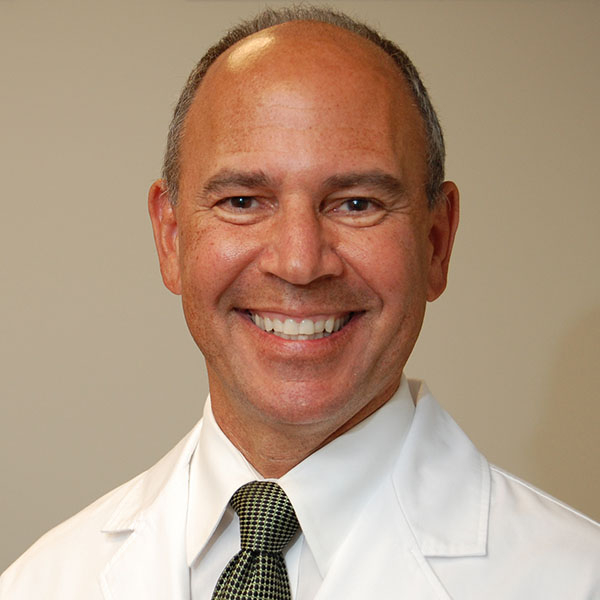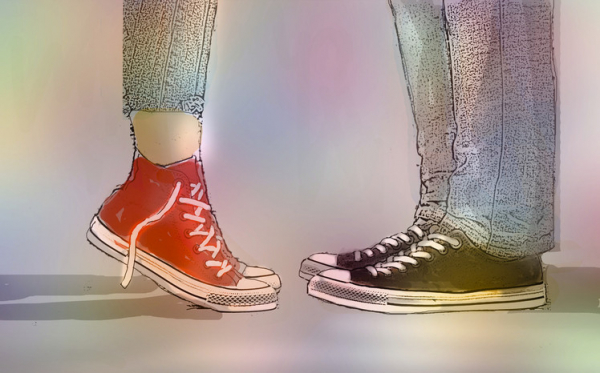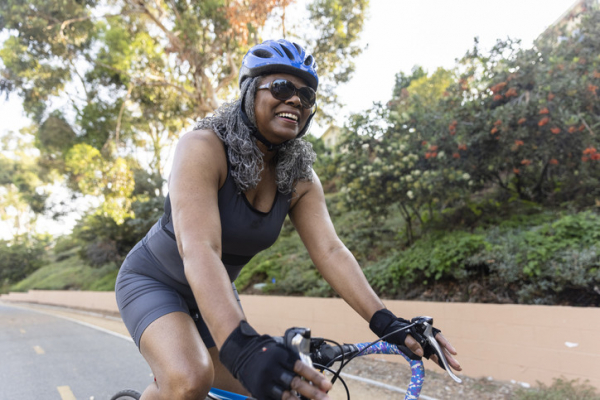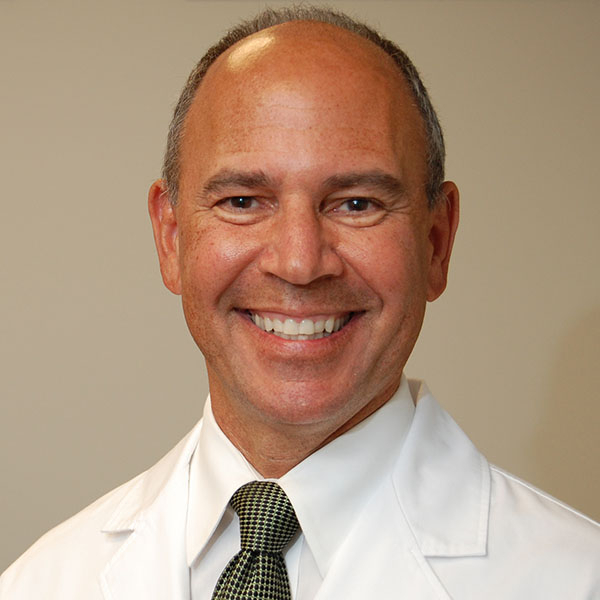
A muscle-building obsession in boys: What to know and do

By the time boys are 8 or 10, they’re steeped in Marvel action heroes with bulging, oversized muscles and rock-hard abs. By adolescence, they’re deluged with social media streams of bulked-up male bodies.
The underlying messages about power and worth prompt many boys to worry and wonder about how to measure up. Sometimes, negative thoughts and concerns even interfere with daily life, a mental health issue known body dysmorphic disorder, or body dysmorphia. The most common form of this in boys is muscle dysmorphia.
What is muscle dysmorphia?
Muscle dysmorphia is marked by preoccupation with a muscular and lean physique. While the more extreme behaviors that define this disorder appear only in a small percentage of boys and young men, it may color the mindset of many more.
Nearly a quarter of boys and young men engage in some type of muscle-building behaviors. “About 60% of young boys in the United States mention changing their diet to become more muscular,” says Dr. Gabriela Vargas, director of the Young Men’s Health website at Boston Children’s Hospital. “While that may not meet the diagnostic criteria of muscle dysmorphia disorder, it’s impacting a lot of young men.”
“There’s a social norm that equates muscularity with masculinity,” Dr. Vargas adds. “Even Halloween costumes for 4- and 5-year-old boys now have padding for six-pack abs. There’s constant messaging that this is what their bodies should look like.”
Does body dysmorphic disorder differ in boys and girls?
Long believed to be the domain of girls, body dysmorphia can take the form of eating disorders such as anorexia or bulimia. Technically, muscle dysmorphia is not an eating disorder. But it is far more pervasive in males — and insidious.
“The common notion is that body dysmorphia just affects girls and isn’t a male issue,” Dr. Vargas says. “Because of that, these unhealthy behaviors in boys often go overlooked.”
What are the signs of body dysmorphia in boys?
Parents may have a tough time discerning whether their son is merely being a teen or veering into dangerous territory. Dr. Vargas advises parents to look for these red flags:
- Marked change in physical routines, such as going from working out once a day to spending hours working out every day.
- Following regimented workouts or meals, including limiting the foods they’re eating or concentrating heavily on high-protein options.
- Disrupting normal activities, such as spending time with friends, to work out instead.
- Obsessively taking photos of their muscles or abdomen to track “improvement.”
- Weighing himself multiple times a day.
- Dressing to highlight a more muscular physique, or wearing baggier clothes to hide their physique because they don’t think it’s good enough.
“Nearly everyone has been on a diet,” Dr. Vargas says. “The difference with this is persistence — they don’t just try it for a week and then decide it’s not for them. These boys are doing this for weeks to months, and they’re not flexible in changing their behaviors.”
What are the health dangers of muscle dysmorphia in boys?
Extreme behaviors can pose physical and mental health risks.
For example, unregulated protein powders and supplements boys turn to in hopes of quickly bulking up muscles may be adulterated with stimulants or even anabolic steroids. “With that comes an increased risk of stroke, heart palpitations, high blood pressure, and liver injury,” notes Dr. Vargas.
Some boys also attempt to gain muscle through a “bulk and cut” regimen, with periods of rapid weight gain followed by periods of extreme calorie limitation. This can affect long-term muscle and bone development and lead to irregular heartbeat and lower testosterone levels.
“Even in a best-case scenario, eating too much protein can lead to a lot of intestinal distress, such as diarrhea, or to kidney injury, since our kidneys are not meant to filter out excessive amounts of protein,” Dr. Vargas says.
The psychological fallout can also be dramatic. Depression and suicidal thoughts are more common in people who are malnourished, which may occur when boys drastically cut calories or neglect entire food groups. Additionally, as they try to achieve unrealistic ideals, they may constantly feel like they’re not good enough.
How can parents encourage a healthy body image in boys?
These tips can help:
- Gather for family meals. Schedules can be tricky. Yet considerable research shows physical and mental health benefits flow from sitting down together for meals, including a greater likelihood of children being an appropriate weight for their body type.
- Don’t comment on body shape or size. “It’s a lot easier said than done, but this means your own body, your child’s, or others in the community,” says Dr. Vargas.
- Frame nutrition and exercise as meaningful for health. When you talk with your son about what you eat or your exercise routine, don’t tie hoped-for results to body shape or size.
- Communicate openly. “If your son says he wants to exercise more or increase his protein intake, ask why — for his overall health, or a specific body ideal?”
- Don’t buy protein supplements. It’s harder for boys to obtain them when parents won’t allow them in the house. “One alternative is to talk with your son’s primary care doctor or a dietitian, who can be a great resource on how to get protein through regular foods,” Dr. Vargas says.
About the Author

Maureen Salamon, Executive Editor, Harvard Women's Health Watch
Maureen Salamon is executive editor of Harvard Women’s Health Watch. She began her career as a newspaper reporter and later covered health and medicine for a wide variety of websites, magazines, and hospitals. Her work has … See Full Bio View all posts by Maureen Salamon
About the Reviewer

Howard E. LeWine, MD, Chief Medical Editor, Harvard Health Publishing
Dr. Howard LeWine is a practicing internist at Brigham and Women’s Hospital in Boston, Chief Medical Editor at Harvard Health Publishing, and editor in chief of Harvard Men’s Health Watch. See Full Bio View all posts by Howard E. LeWine, MD

Sexually transmitted infections: What parents need to be sure their teens know

It’s never easy for parents to talk to their teens about having sex. Many parents feel that talking about it is the same as condoning it, so they are hesitant to do so. But according to the most recent Youth Risk Behavior Survey (YRBS), a national survey of high school students, by the end of high school 30% have had sex.
It can be impossible to know for sure if your teen has had sex. Even if they haven’t, it’s likely that at some point they will — and they need to have information to help keep themselves safe and healthy.
What parents should know about sexually transmitted infections
Sexually transmitted infections, or STIs, are very common. They may be caused by bacteria, viruses, or other microorganisms, and spread through all kinds of sex. While most STIs are treatable, they can affect fertility in both women and men, can cause health problems for a baby during pregnancy, and can sometimes lead to lifelong infection or serious complications. That’s why teens need to know about them.
Below are the high-level facts about some of the most common infections: what causes them, what symptoms may occur, and how they are treated.
Chlamydia
Chlamydia is the most frequently reported bacterial STI in the United States — but just as many cases are asymptomatic, so the numbers may be higher than we realize.
Symptoms, if they are present, can include discharge from the vagina or penis, pain with urination, or pain and swelling of the testicles (this is rare). A test of the urine (or a swab from the affected area) can diagnose it, and it is curable with antibiotics. If left untreated it can lead to infertility, more commonly in women than men.
Gonorrhea
Gonorrhea is another STI caused by a bacteria, and it can also be asymptomatic. When symptoms occur, they are very similar to chlamydia. Gonorrhea also can cause infertility in both women and men. While it is treatable, some infections have been resistant to the usual antibiotics used, so additional testing and treatment is sometimes needed.
Trichomoniasis
Trichomoniasis is caused by a protozoa. It is another STI that can be asymptomatic. When there are symptoms, they are usually itch, irritation, and discharge. It is curable with medication.
Syphilis
Syphilis has been on the rise. In the first stage of infection there is usually a firm, round, painless sore where the infection entered the body. The sore is generally there for three to six weeks, but as it is painless it may go unnoticed.
In the second stage there is a more extensive rash, though it can be faint and go unnoticed, along with general feelings of illness such as fever, sore throat, fatigue, swollen lymph nodes, or weight loss.
If syphilis still goes unnoticed it can linger in the body for years, sometimes affecting organ systems, including the brain. It is curable with antibiotics, but if found late the damage it can do may be permanent. This infection can be very serious during pregnancy.
HSV
HSV (herpes simplex virus) causes blistering sores. There is both oral herpes (mouth sores) and genital herpes. Oral herpes, caused by HSV1, is not usually caused by sex — but it can lead to genital herpes through oral sex. Genital herpes is more commonly caused by HSV2.
The sores of herpes can recur throughout life. There is no cure for herpes, but there are medications that can shorten or prevent outbreaks. This infection can be particularly dangerous during pregnancy, although the risks can be managed with good prenatal care.
HPV
HPV (human papilloma virus) is the most common sexually transmitted infection. It can be transmitted even by close skin-to-skin touch, and infections are generally asymptomatic.
Most cases of HPV (90%) get better by themselves — but if they don’t, over time the virus can cause genital warts or certain cancers. Luckily, there is an effective vaccine to prevent HPV that can be given starting at age 9.
HIV
HIV (human immunodeficiency virus) is more common among people who have other STIs — mostly because having STIs is a sign of risky sexual behavior. It can be very hard to know if a person has it, because the early symptoms can feel like having the flu, and then people can move into a long period of time of having no symptoms at all.
While there is no cure for HIV, there are medications to control it, as well as medications that can prevent it.
Talking to teens about preventing STIs
All of this sounds scary. But there are actually some simple things teens can do to prevent infections or minimize complications, which is why parents need to talk with them.
Teens can:
- Use condoms every single time they have sex — and use them properly. According to the report mentioned above, about half of sexually active high schoolers don’t use condoms regularly.
- Limit their number of sexual partners — and have frank conversations with those partners before having sex. Asking about sexual history, and getting testing before starting a sexual relationship, can make a difference.
- Get tested regularly. Sexually active teens should be tested for gonorrhea and chlamydia every year, or more frequently based on their sexual history or symptoms. Testing for other infections may be a good idea too. In the YRBS, 95% of high schoolers had not been tested for STIs in the past year, which is frightening given that nearly a third report being sexually active.
Make sure your teen sees their doctor regularly. And encourage them to be honest with their doctor during their visits. As a parent, you can help by giving your teen confidential time alone with the doctor.
About the Author

Claire McCarthy, MD, Senior Faculty Editor, Harvard Health Publishing
Claire McCarthy, MD, is a primary care pediatrician at Boston Children’s Hospital, and an assistant professor of pediatrics at Harvard Medical School. In addition to being a senior faculty editor for Harvard Health Publishing, Dr. McCarthy … See Full Bio View all posts by Claire McCarthy, MD

Strong legs help power summer activities: Hiking, biking, swimming, and more

My favorite summer activities officially kick in when the calendar flips to May. It's prime time for open water swimming, running, cycling, hiking, and anything else that gets me outside and moving. Yet, my first step is to get my legs in shape.
“Legs are the foundation for most activities,” says Vijay Daryanani, a physical therapist at Harvard-affiliated Spaulding Rehabilitation Hospital. “They're home to some of the body’s largest muscles, and building healthy legs can improve one’s performance, reduce injury, and increase endurance.”
Four leg muscle groups to build for summer activities
Four muscles do the most leg work: quadriceps, gluteus maximus (glutes), hamstrings, and calves. Here is a look at each.
Quadriceps (quads). Also known as the thigh muscles, the quads are a group of four muscles (hence the prefix "quad'). They extend your leg at the knee and power every leg action: stand, walk, run, kick, and climb.
Glutes. The body’s largest muscles, the glutes (your buttock muscles) keep you upright and help the hips and thighs propel your body forward.
Hamstrings. The hamstrings are a group of three muscles that run along the back of your thighs from the hip to just below the knee. They allow you to extend your leg straight behind your body and support hip and knee movements.
Calves. Three muscles make up the calf, which sits in the back of the lower leg, beginning below the knee and extending to the ankle. They work together to move your foot and lower leg and push you forward when you walk or run.
Spotlight muscle strength and length
Strength and length are the most important focus for building summer-ready legs, says Daryanani. “Strengthening leg muscles increases power and endurance, and lengthening them improves flexibility to protect against injury.”
If you are new to exercise or returning to it after time off, first get your legs accustomed to daily movement. “Start simply by walking around your home nonstop for several minutes each day, or climbing up and down stairs,” says Daryanani.
After that, adopt a walking routine. Every day, walk at a moderate pace for 20 to 30 minutes. You can focus on covering a specific distance (like one or two miles) or taking a certain number of steps by tracking them on your smartphone or fitness tracker. You won’t just build leg strength — you’ll reap a wide range of health benefits.
There are many different leg muscle-building exercises, some focused on specific activities or sports. Below is a three-move routine that targets the four key leg muscles. Add them to your regular workout or do them as a leg-only routine several times a week. (If you have any mobility issues, especially knee or ankle problems, check with your doctor before starting.)
To help lengthen your leg muscles and increase flexibility, try this daily stretching routine that includes several lower-body stretches.
Dumbbell squats
Muscles worked: glutes and quads
Reps: 8-12
Sets: 1-2
Rest: 30-90 seconds between sets
Starting position: Stand with your feet apart. Hold a weight in each hand with your arms at your sides and palms facing inward.
Movement: Slowly bend your hips and knees, leaning forward no more than 45 degrees and lowering your buttocks down and back about eight inches. Pause. Slowly rise to an upright position.
Tips and techniques:
- Don’t round or excessively arch your back
Make it easier: Do the move without holding weights.
Make it harder: Lower yourself at a normal pace. Hold briefly. Stand up quickly.
Reverse lunge
Muscles worked: quads, glutes, hamstrings
Reps: 8-12
Sets: 1-3
Rest: 30-90 seconds between sets
Starting position: Stand straight with your feet together and your arms at your sides, holding dumbbells.
Movement: Step back onto the ball of your left foot, bend your knees, and lower into a lunge. Your right knee should align over your right ankle, and your left knee should point toward (but not touch) the floor. Push off your left foot to stand and return to the starting position. Repeat, stepping back with your right foot to do the lunge on the opposite side. This is one rep.
Tips and techniques:
- Keep your spine neutral when lowering into the lunge.
- Don't lean forward or back.
- As you bend your knees, lower the back knee directly down toward the floor with the thigh perpendicular to the floor.
Make it easier: Do lunges without weights.
Make it harder: Step forward into the lunges, or use heavier weights.
Calf raises
Muscles worked: calves
Reps: 8-12
Sets: 1-2
Rest: 30 seconds between sets
Starting position: Stand with your feet flat on the floor. Hold on to the back of a chair for balance.
Movement: Raise yourself up on the balls of your feet as high as possible. Hold briefly, then lower yourself.
Make it easier: Lift your heels less high off the floor.
Make it harder: Do one-leg calf raises. Tuck one foot behind the other calf before rising on the ball of your foot; do sets for each leg. Or try doing calf raises without holding on to a chair.
About the Author

Matthew Solan, Executive Editor, Harvard Men's Health Watch
Matthew Solan is the executive editor of Harvard Men’s Health Watch. He previously served as executive editor for UCLA Health’s Healthy Years and as a contributor to Duke Medicine’s Health News and Weill Cornell Medical College’s … See Full Bio View all posts by Matthew Solan
About the Reviewer

Howard E. LeWine, MD, Chief Medical Editor, Harvard Health Publishing
Dr. Howard LeWine is a practicing internist at Brigham and Women’s Hospital in Boston, Chief Medical Editor at Harvard Health Publishing, and editor in chief of Harvard Men’s Health Watch. See Full Bio View all posts by Howard E. LeWine, MD